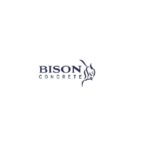Introduction to Visual Basic to C# Conversion
Visual Basic has been a cornerstone for Windows application development for decades. However, with the rise of C# and the .NET ecosystem, many developers are considering migrating their VB applications to C# for better performance, maintainability, and modern development capabilities.
But where do you start? Converting Visual Basic to C# isn’t just about rewriting code—it’s about understanding syntax differences, refactoring outdated logic, and ensuring a smooth transition without breaking your application.
In this guide, we’ll walk you through the step-by-step process of migrating Visual Basic to C#, covering best practices, common challenges, and tools to streamline the transition.
Understanding the Need for Conversion
Why Move from Visual Basic to C#?
Microsoft has been gradually shifting its focus toward C#, making it the preferred language for .NET development. While VB.NET is still supported, its updates and ecosystem growth have slowed compared to C#. Here’s why many developers are making the switch:
- Long-Term Support – C# is a core language in .NET, ensuring continuous updates and improvements.
- Performance and Efficiency – C# offers better performance, scalability, and modern programming features compared to VB.NET.
- Larger Developer Community – C# has a vast ecosystem with extensive support, libraries, and frameworks.
- Modern Features – C# provides access to asynchronous programming, dependency injection, advanced error handling, and more.
Benefits of Migrating to C#
Migrating from Visual Basic to C# comes with several advantages:
- Better Integration with .NET Core and .NET 8 – C# is the primary language for the latest .NET versions, ensuring long-term compatibility.
- Stronger Type Safety and Code Maintainability – C# enforces stricter type safety, reducing runtime errors.
- Improved Performance – C# code tends to run faster, thanks to better optimization within the .NET runtime.
- Access to a Broader Talent Pool – Hiring C# developers is easier compared to VB developers due to higher demand.
Common Challenges in the Conversion Process
Despite the benefits, migrating from Visual Basic to C# comes with challenges, including:
- Syntax Differences – VB and C# have distinct syntax rules that require careful translation.
- Event Handling Variations – Event-driven programming differs between the two languages.
- Error Handling Adjustments – VB uses structured error handling (On Error Resume Next), while C# relies on try-catch blocks.
- API and Library Changes – Some VB libraries may not have direct equivalents in C#.
Preparation for Conversion
Assessing Existing Code Quality
Before starting the migration, analyze your Visual Basic codebase:
- Identify outdated or deprecated functions.
- Look for redundant or inefficient code that can be refactored.
- Check for third-party dependencies that may require alternative solutions in C#.
Setting Up Your Development Environment
To ensure a smooth transition, set up a proper development environment:
- Install Visual Studio with C# support.
- Set up a version control system like Git to track changes.
- Create a testing strategy to verify the converted code.
Key Tools for Conversion
Several tools can assist in converting Visual Basic to C#:
| Tool Name | Features | Pros | Cons |
| Instant C# | High accuracy, batch conversion | Fast processing | Requires good quality VB code |
| Code Converter (VS) | Integrated with Visual Studio | Easy to use | Limited to single files |
| Manual Conversion | Complete control over code | Customization options | Time-consuming |
While tools can help automate part of the process, manual review and adjustments are necessary for complex applications.
Step-by-Step Conversion Process
1. Code Cleanup and Refactoring
Importance of Code Cleanup
Migrating messy code leads to complications. Cleaning up your VB code before conversion improves readability and maintainability.
Techniques for Refactoring VB Code
- Remove unused variables and redundant logic.
- Consolidate repetitive functions.
- Use modular programming principles to simplify the code structure.
2. Converting Basic Syntax
Data Types and Declarations
Visual Basic and C# handle data types differently. Some common conversions include:
| VB.NET | C# |
| Dim x As Integer | int x; |
| Dim str As String = “Hello” | string str = “Hello”; |
| Dim isActive As Boolean = True | bool isActive = true; |
Control Structures and Flow
VB uses different keywords for loops and conditions.
Example – If Statement
VB:
If x > 10 Then
Console.WriteLine(“Greater than 10”)
End If
C#:
if (x > 10) {
Console.WriteLine(“Greater than 10”);
}
3. Handling Advanced Features
Converting Events and Delegates
VB uses the Handles keyword, while C# employs event handlers and delegates.
VB:
Public Sub Button_Click() Handles Button1.Click
MessageBox.Show(“Clicked”)
End Sub
C#:
Button1.Click += (sender, e) => {
MessageBox.Show(“Clicked”);
};
Managing Error Handling and Exceptions
VB relies on On Error Resume Next, which is not available in C#. Instead, use try-catch blocks.
VB:
On Error Resume Next
Dim result = 10 / x
C#:
try {
int result = 10 / x;
} catch (Exception ex) {
Console.WriteLine(ex.Message);
}
Utilizing Conversion Tools
While manual conversion provides the highest accuracy, tools can speed up the process.
- Instant C# – Best for large-scale projects with batch conversion.
- Code Converter by Telerik – Useful for quick syntax conversions.
- Visual Studio’s Built-in Converter – Ideal for small code snippets.
Post-Conversion Steps
Testing and Validation
- Conduct unit tests to ensure functionality remains intact.
- Compare output from the VB version with the C# version.
- Fix compilation errors and logic discrepancies.
Optimizing Performance in C#
- Utilize asynchronous programming for better responsiveness.
- Implement memory management best practices to prevent leaks.
- Use LINQ and modern C# features to improve efficiency.
Common Pitfalls to Avoid
- Ignoring code cleanup before conversion.
- Not refactoring inefficient VB logic.
- Over-relying on automated conversion tools without manual review.
Case Study: Successful Migration Example
Overview of the Project by Abto Software
Abto Software successfully migrated a legacy VB6 application to C# for a financial services firm. The new system improved performance by 40%, reduced maintenance costs, and enhanced security compliance.
Key Takeaways from the Migration Process
- Plan and test before full-scale migration.
- Use a hybrid approach of manual and automated conversion.
- Prioritize performance optimization post-migration.
Conclusion and Best Practices
Migrating from Visual Basic to C# is a significant step, but with the right approach, it leads to a more maintainable, scalable, and modern application.
Final Thoughts on Smooth Migration
- Analyze your codebase before starting.
- Use automation tools but verify manually.
- Optimize and test thoroughly after migration.
Resources for Ongoing Learning
- Microsoft’s official C# documentation
- Online courses on C# and .NET
- Community forums like Stack Overflow and GitHub
FAQs
- How long does it take to convert a VB project to C#?
It depends on the complexity. Small projects can take a few days, while large applications may take months. - Can I use AI tools to convert Visual Basic to C#?
AI-assisted tools can help, but manual review is essential for accuracy. - What is the best tool for Visual Basic to C# conversion?
Instant C# is one of the most reliable tools for batch conversion. - Is it necessary to rewrite all the code manually?
Not always. Many parts can be automated, but manual tweaks ensure the best results. - What are the biggest challenges in migrating to C#? Syntax differences, event handling, and error management are the most common challenges.




